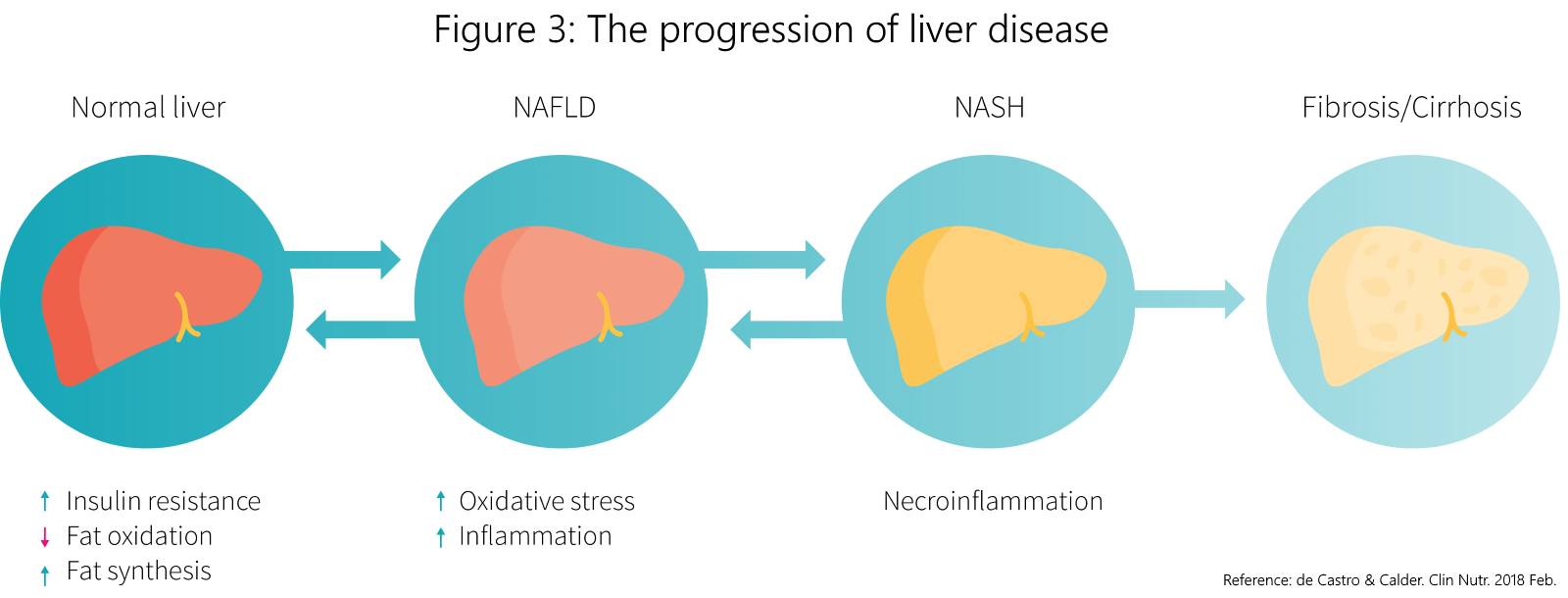Nonalcoholic fatty liver disease (NAFLD) and nonalcoholic steatohepatitis (NASH) are related, yet distinct, terms. NAFLD refers to a spectrum of liver diseases characterized by excess fat stored in the liver without excessive alcohol consumption or other secondary causes of fatty liver disease. Clinically, NAFLD is categorized as either simple fatty liver (NAFL) in which excess fat accumulation has occurred, but there is no evidence of cellular damage, or NASH, in which, in addition to the excess fat accumulation, inflammation of the liver (hepatitis), cellular damage (i.e., hepatocyte ballooning), and perhaps structural changes such as fibrosis are present. NASH occurs in about 20%[1] of people with NAFLD and is often thought of as the progressive form of NAFLD. We summarize how a healthy liver progresses through these steps in Figure 3.

How are NAFLD and NASH different?
Written by:
•Last Updated: May 16, 2025
Nonalcoholic fatty liver disease (NAFLD) encompasses a range of liver conditions that are characterized by fat accumulation without excessive alcohol consumption, whereas nonalcoholic steatohepatitis (NASH) is a more severe form of NAFLD that includes inflammation, cellular damage, and potential fibrosis. Approximately 20% of people with NAFLD develop NASH, which is considered a progressive stage of the disease.
